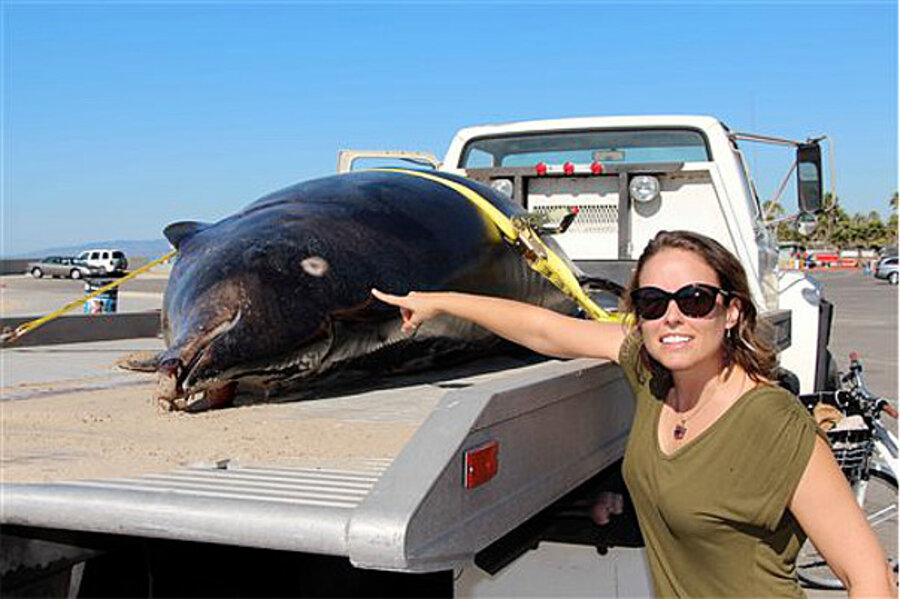Saber-toothed whale? 15-foot-long Stejneger's beaked whale found dead.
Loading...
| LOS ANGELES
A rare whale that has a dolphin-shaped head and saber-like teeth has been found dead on Los Angeles' Venice Beach, even though it prefers frigid subarctic waters.
The roughly 15-foot-long female Stejneger's beaked whale washed ashore Tuesday night, the Los Angeles Times reported. A truck hauled away the mammal, which was being examined at the Los Angeles County Natural History Museum to determine how it died.
The Stejneger's beaked whale is rarely seen in the wild. The species typically dives deep in subarctic waters to feed on squid and small fish. It is believed to migrate as far south as Northern California, and how the whale ended up so far south will probably remain a mystery.
"This is the best," said Nick Fash, an education specialist for the Santa Monica-based environmental group Heal the Bay. "(Previous finds) aren't anything like this. This is a treat."
Males are known for their saber teeth that stick up midway from each side of the lower jaw. However, the teeth of females and their offspring remain hidden beneath the gum tissue.
The whale was alive when it washed ashore, said Peter Wallerstein of Marine Animal Rescue. Its body was covered in bites from so-called cookie-cutter sharks that feed by gouging round pieces of flesh from larger animals.
Because the species isn't seen much anywhere, the autopsies of washed-up carcasses are the best source for scientists to gather information.





